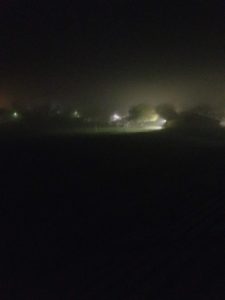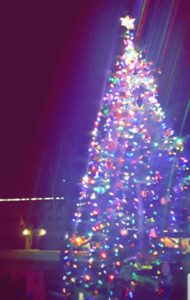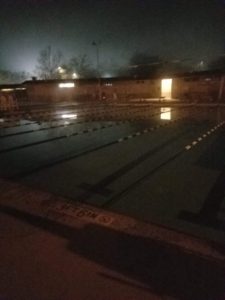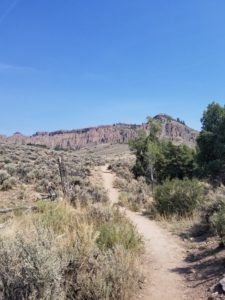The best thing to me about Sacramento, California has always been how easy it to leave. Something I have never been quite able to get out of my head was the motto for the regional girl scout chapter, “Girl Scouts Heart of Central California”. As a kid it seemed to be the center of the universe, everywhere you could possibly want to go you could go from there.
I spent my childhood summers leaving with my family. Sometimes, we would go north to the snow-capped domes of the southern Cascades, and dewy, green stream fed meadows crisscrossed with fallen trees in various stages of decay. Other times we would go west to rocky beaches, and foggy redwood forests, or else south to valleys and deserts and forests, or east to rocky wilderness and the crystal-clear waters of lakes barely visible one end to the other. In the winter, we would visit winter wonderlands of steep slopes and bright blue skies, or sunny SoCal beaches. But always, at the end of our adventures we would return to Sacramento, a tree filled city in the middle of an agricultural desert, a small jagged skyline rising out of dust. We would drive home across flooded fields, on bridges over sluggish, murky waters. Off fast speeding, crowded freeways onto slow, tree lines streets, houses with bright paint, white trim, and tall stairways, or chipped paint and a dusty leaning porch.
So, in my youthful world view, Sacramento became the heart. Not the best thing, not the only thing, but the point from whence everything came, and everything went.
Though the rivers that had once swept down the gold that Sacramento had sprung up around are now good for only the transportation of boats, and the endless sediment and pollution that the Sacramento and the American rivers pick up before they converge near downtown; it sometimes seems like they create one massive swirling eddy, a strong low pressure system, right in the center of the Central Valley where everything settles. There is no place in Sacramento where this seems truer than the delta.
12:30 am on a Christmas eve somewhere, myself and an old friend find ourselves in a car, driving nowhere in particular. We were talking about love and friendship, and sex and drugs and everything else, and how much we had changed since we last had seen each other. We took a right turn on a levee road heading west, into the delta, where every waterway in Central California converges and splits apart and merges until everything empties out into the San Francisco Bay and the Pacific Ocean. We thought no more of it than anyone else would think of a right turn, but after driving straight for some time we found ourselves passing the same road we had turned off. Somehow, we had gone in a circle.

And, at the intersection of hope and despair, I like to think that everyone chooses hope, so instead of turning back the way we had come, and going home, and going to bed, as all good children should on Christmas eve, we kept driving- determined to escape. Escape what, I don’t know, but we kept driving, headlights in the fog, the river on the left, the river on the left, blasting The Doors, river on the left, until we were back again at our favorite intersection. Spirits determined, we traveled onward. On and on, down sideroads that led immediately back onto the main road, swerving potholes and rabbits that dashed in front of the car, and then back again at the place where it all began.
Eventually, we determined that the only way we would ever escape was to cross the river on a ferry. So, after entertaining the late-night ferry man with our sleep deprived lack of critical thinking skills, we were off into the deep black something of 3am highways, through foggy farmland warped and distorted by the occasional streetlight.
After driving for some time, we drove onto the old western main street of Dixon, California, strung up with Christmas lights, and a two-story evergreen tree lit up and decorated in a park. We parked, got out of the car, and went to take very cryptic pictures of ourselves standing in the branches.

There’s this quote by Joan Didion, “Anybody who talks about California hedonism has never spent a Christmas in Sacramento.” Having split many of my childhood Christmases between Sacramento and Los Angeles, I have no idea what she is talking about. What I will say, is that Joan Didion clearly did not spend any Christmases with the two of us.
After our photo shoot with the giant Christmas tree, with a sense of misdirection I can only attribute to being high on life and a sky full of stars, we found ourselves climbing the fence of an under construction high school, peering through boarded up windows and jumping over muddy trenches. We ice skated on frozen bleachers and sprinted across empty fields in the dark till we tripped over shadows. Eventually we meandered back in the direction we came, and found a swing set and swung until the ground no longer seemed to lie flat underneath us. As a final hurrah, we hopped the fence to a public swimming pool and dove in naked for just a moment, until the icy water chilled the blood, and we ran back to my car.

As the sunrise painted the sky a rainbow, we drove back on the interstate over bridges and rivers towards Sacramento, two blood cells returning to the chest, blue and shivering. I have found over and over again, that in a city built on the rushing currents of rivers, and highways, and the deposits of everything that comes to rest along their banks, that the delta always seems to abridge that- sweeping everything and anything out to sea, filled with aimless meandering channels where there were once fast straight currents and four lanes of traffic.


